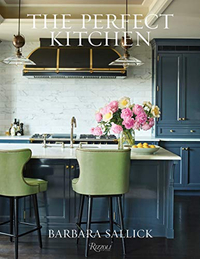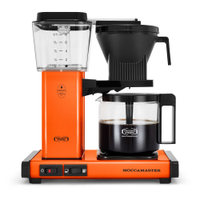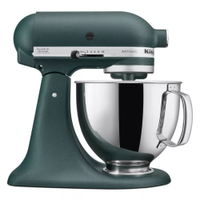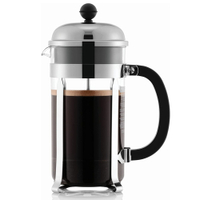8 appliance placement rules for harmony in the kitchen, according to experts
Expert recommendations to help you find the best home for new and old appliances, without cluttering up your counters
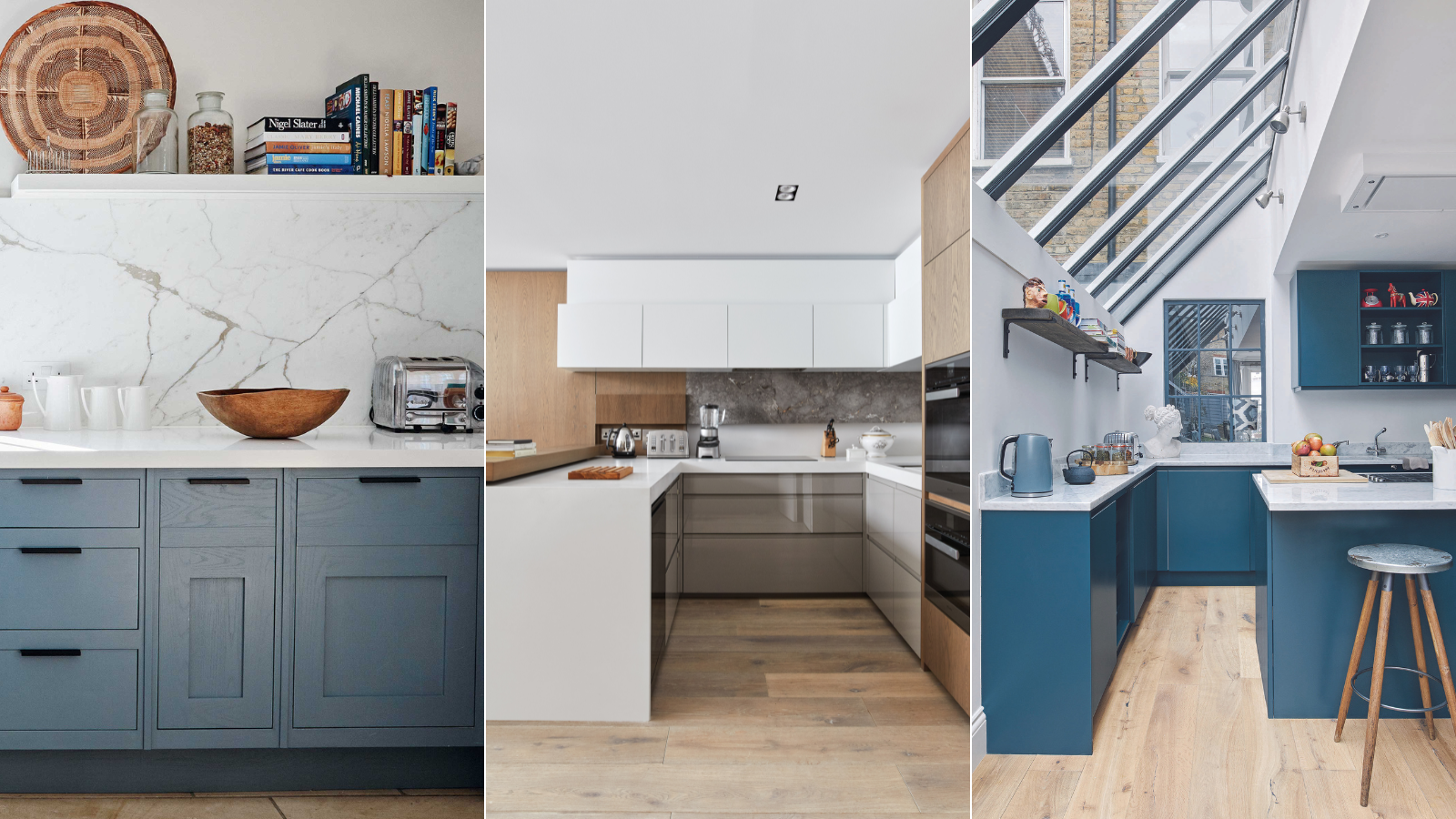
- 1. Always think of your home's natural workflow
- 2. Make subtle spatial changes to 'camouflage' appliances
- 3. Keep appliances at least 4ft apart
- 4. Look beyond the kitchen
- 5. Categorize not just by function
- 6. Let some appliances 'serve as focal points'
- 7. Leave space to weave in decorative items
- 8. Stay true to the essentials
- FAQs

Without a shadow of a doubt, appliances are designed to make life easier. Choose them wisely and they can turn a hectic household routine into one that is streamlined and dare we say, harmonious.
Note that organizing kitchen appliances might be easier said than done. And, if traditional and obvious space is not on your side, how can you sensibly buy kitchen appliances you need, without negatively impacting your home's functionality?
An overly busy kitchen and cluttered kitchen countertops will never do. Whether you are working with a small apartment space or would like to enjoy some Black Friday home deals, without any guilt, looking beyond classic kitchen storage ideas might see you enjoying that brand new coffee maker, without compensating your home's aesthetic and function.
Kitchen appliance placement rules for more harmony
Much like a stand mixer will quickly counteract sore arms and preserve essential baking minutes when forming stiff peaks, an air fryer could let you take back precious time, for moments better spent enjoying dinner around the table. If you are still stuck on how to integrate new appliances into your home's existing layout, we called on the experts for their best recommendations – in and out of the kitchen. Stick to their rules for best success:
1. Always think of your home's natural workflow
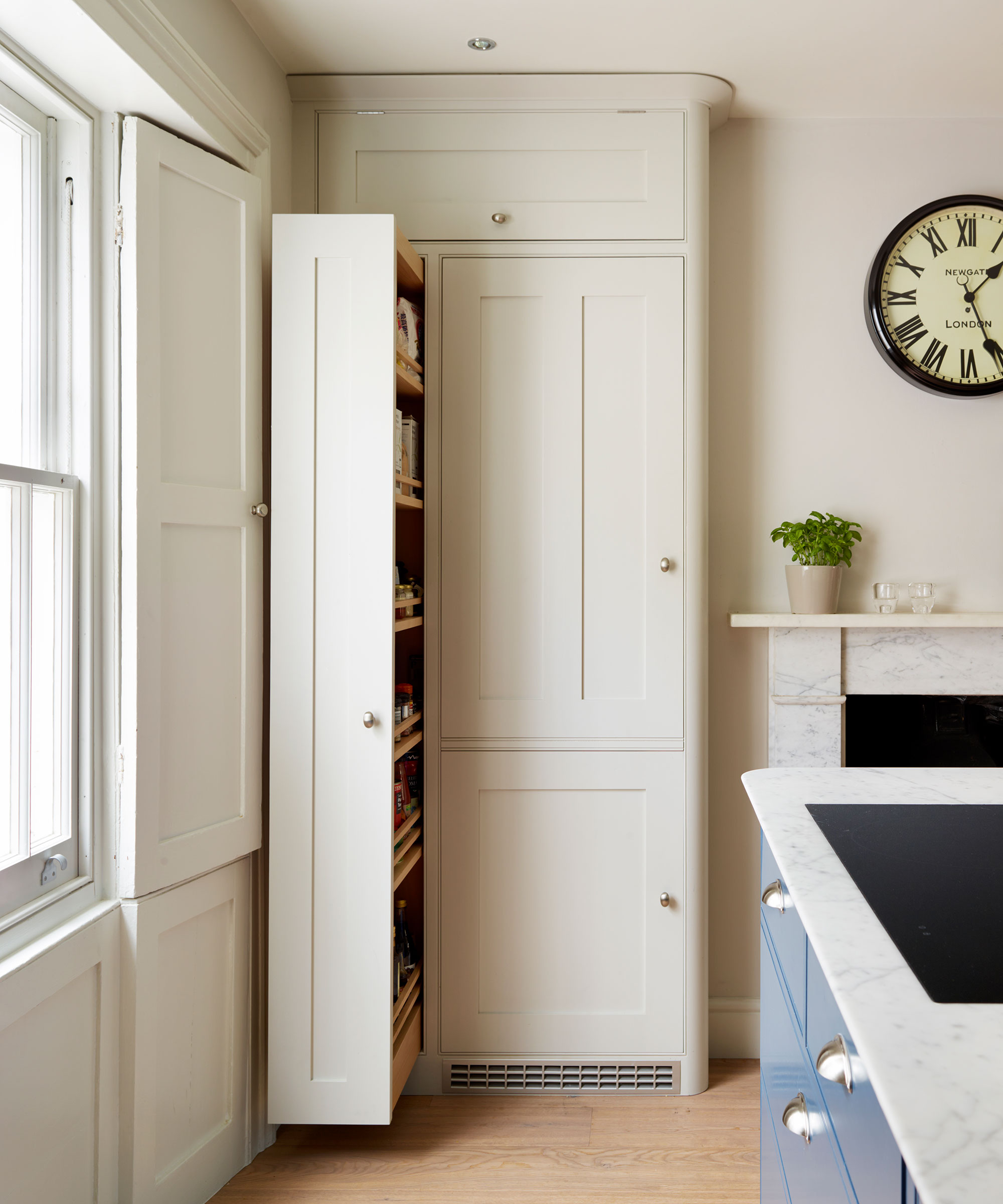
Firstly, when considering anything new for your home, viewing purchases as investments is best practice when shopping sustainably, and to help keep an organized kitchen. 'As an interior designer, I have often faced the challenge of seamlessly integrating appliances into a home's aesthetic flow,' shares Vera Li, interior designer for POVISON.
'It's a delicate balance between practicality and visual appeal, and one that requires careful consideration of both the appliance's function and the space it will occupy.'
Next, ask yourself how, and how often, you will use the appliances. This will help determine the best positioning, whether you're looking for the best appliances for small kitchens or shopping for larger items to feed a bigger household.
'Frequently used appliances, like coffee makers and toasters, should be easily accessible, preferably within countertop reach. This minimizes the amount of movement required for daily tasks, ensuring a smooth and efficient workflow,' says Li.
Vera Li has years of experience in the interior design industry. As an interior design professional for home furnishing brand, POVISON, Vera focuses on designing spaces that are just as functional, as they are stylish.
2. Make subtle spatial changes to 'camouflage' appliances

Going custom with kitchen cabinetry will help carve out the exact amount of space you need for different appliances, and they can be designed for a nearby pantry, or neighboring hallway where space allows.
London-based interior designer, Rudolph Diesel, shares: 'How you arrange your home’s layout will have a huge impact on how you conduct your domestic day-to-day life; even subtle changes in your spatial arrangement could have a large impact on the home’s aesthetic and functionality.
'Before committing yourself to a particular arrangement or range of furniture, I’d consider evaluating whether you could accommodate built-in home appliances. These home appliances, like dishwashers or refrigerators, are designed to seamlessly blend in with the room’s cabinetry. This can maximize storage space and create an integrated aesthetic throughout the room, which is why built-in appliances are especially popular for places like the kitchen or utility room.'
Artem Kropovinsky, an interior design expert and the founder of Arsight recommends we reserve bespoke solutions for larger appliances: 'Put bigger appliances into custom cabinets for a clean design that is both useful and attractive.'
This can also work for smaller items that need a little disguising. 'For appliances that don't quite fit the aesthetic of a particular space, consider camouflaging them,' says Li. 'Built-in appliances, like ovens and microwaves, seamlessly integrate into cabinetry, creating a clean and uncluttered look.' Appliance garages can also be a brilliant way to disguise and group likewise appliances in a way that will complement the rest of your kitchen styling.

Rudolph Diesel is a top London interior designer with a relentless passion for design and detail who has been featured in top publications such as The Times, Woman & Home and Ideal Home. Rudolph Diesel has developed a keen eye for aesthetic home design throughout his career; his insights into interior design and space management are invaluable.

Artem Kropovinsky is an interior design expert and the founder of Arsight, a global award-winning design firm with over a decade of experience in residential and commercial interior design. With a cohesive team of professionals, Arsight specializes in tackling complex projects, including new constructions, complete residential renovations, restaurants, and retail stores. Their designs embrace authenticity and originality, utilizing natural materials and handcrafted elements for a unique and cohesive aesthetic.
3. Keep appliances at least 4ft apart
We use our countertops for many things, from chopping vegetables to, occasionally, answering emails. When adding more, try to not overwhelm the space you have.
'The general rule of thumb is that kitchen appliances should be at least 4ft apart. As kitchen counters tend to be around 4ft long, you should only have one or two appliances per countertop,' recommends Diesel.
'The only appliances left out on the counter should be the ones you use on a regular basis. If you only use an appliance every now and then, you should store it away in a kitchen cupboard.'
If you find that you have appliances you are hardly ever using, consider donating them if they still work. If they are passed their best and you aren't able to repair them, look into how they might be recycled. Some companies may even offer trade-ins when you are purchasing another product.
The Perfect Kitchen, Barbara Sallick | From $21.87 at Amazon
Learn more about the beautiful and inspirational kitchen design in this bestselling book by Barbara Sallick. Find practical advice as well as hundreds of images to inspire your own design.
4. Look beyond the kitchen
If you are unable to follow Diesel's 4ft appliance distance rule, and do not have a pantry, consider where smaller, more moveable appliances might be able to live instead. When doing this, it is important to find the right home to keep appliances in safe and proper working order.
'Proper appliance storage is really important to guarantee their longevity and functionality,' says Fantastic Services' appliance technician David Miloshev who shares some guidance on how to approach relocating smaller appliances such as toasters and blenders, elsewhere: 'It’s recommended to store small appliances in a clean, dry area and cover them to prevent dust accumulation. Additionally, keep their cords organized and untangled to prevent them from getting damaged, and avoid wrapping them tightly around the appliance.'
The coffee machine is the perfect example of an appliance you could keep in another room of your home: the bedroom, or dining room, provided it is safely and artistically positioned, of course.
Guillaume Pereira, product manager and KRUPS spokesperson says: 'Coffee machines are good examples of a domestic appliance that can be placed elsewhere than on the kitchen countertop.
'KRUPS coffee machines will perfectly blend in with a refined interior, in the dining or living rooms for example.' So long as general risks are taken into account, for instance, water near plug outlets, moving such appliances to more convenient areas in your home could make life more streamlined.
Technivorm Moccamaster | Was $359, now $251 at Amazon
We've long loved this throwback coffee maker. There's lots of other colors - you don't have to go for such a striking 70s orange - but it makes for a mid-century accent in any color.
5. Categorize not just by function
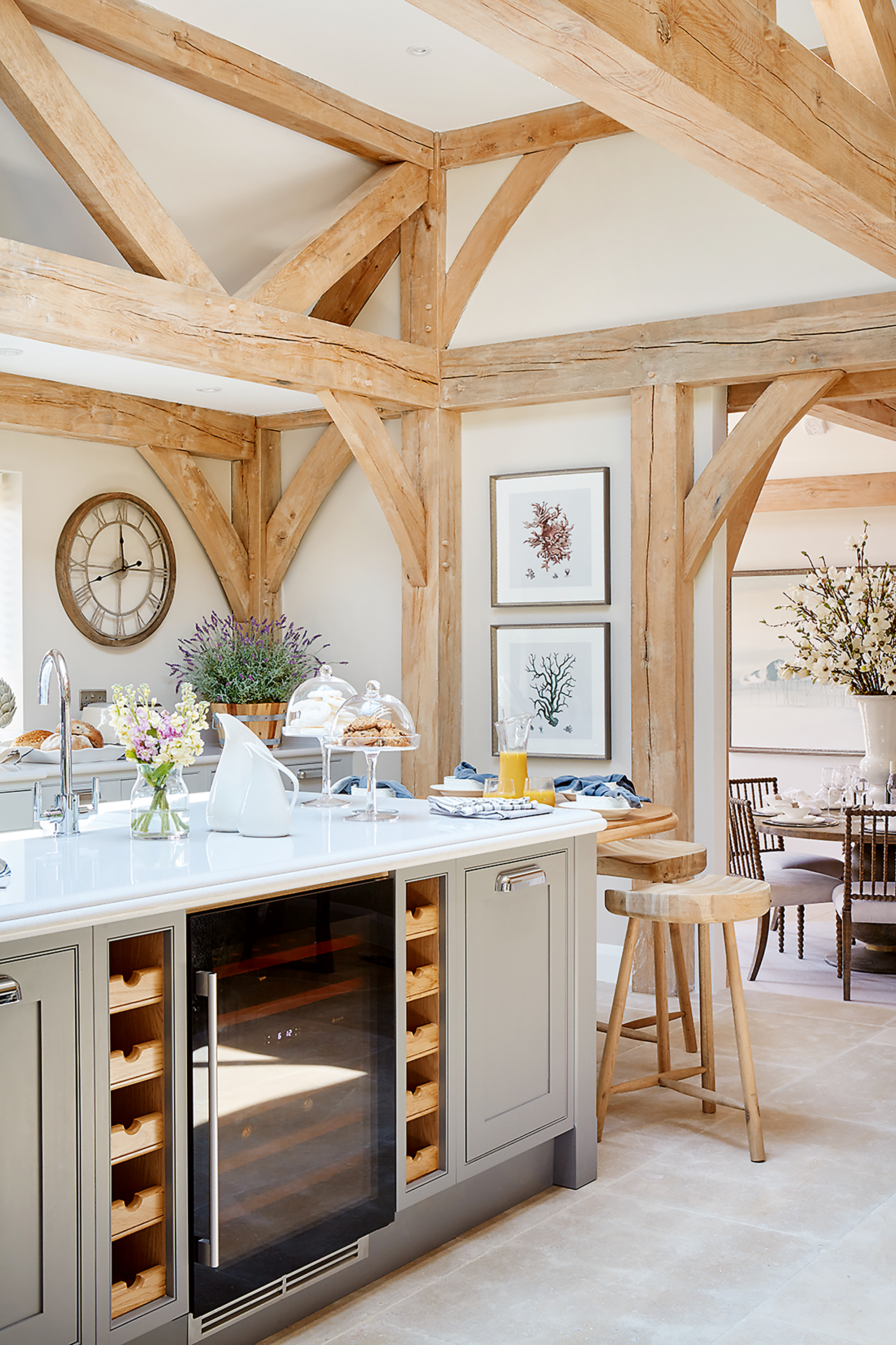
And for the beautiful, and most frequently used appliances, bring them together in ways that make sense visually as well. Clever positioning will help your space maintain its flow, whether they are part of an open-plan kitchen or a modern dining room.
'When arranging where to place your appliances at home, I’d recommend grouping related items together and designating specific areas to them,' says Diesel. 'For example, you could create a coffee station that holds the coffee maker, mugs, spoons, sugar, and any other related items.'
Though tempting to corral appliances by function, being more flexible with your categories will leave more room for added aesthetic value. 'You could also group appliances with similar colors or styles to create a more cohesive impression.'
6. Let some appliances 'serve as focal points'
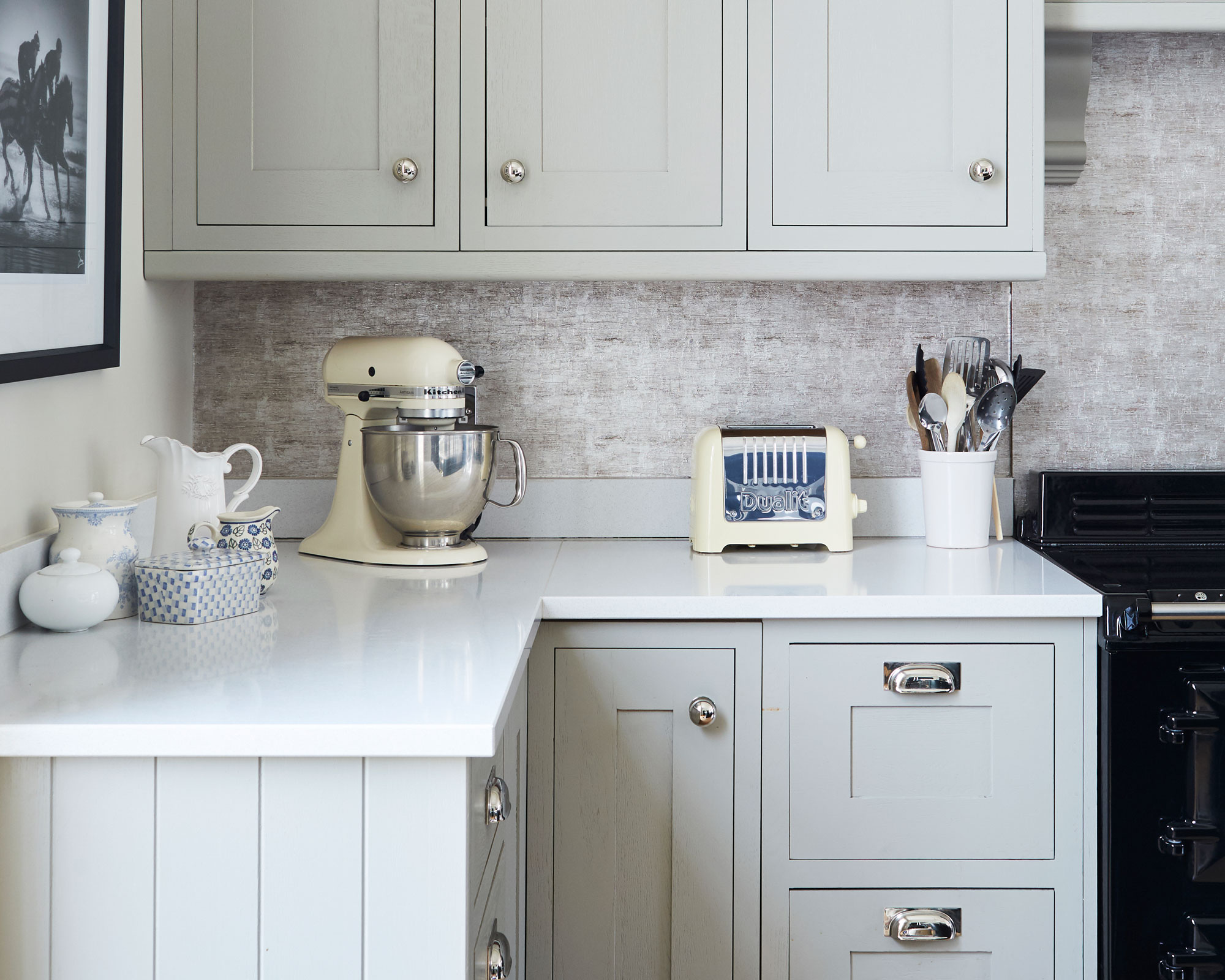
Good-looking appliances can be a sight in themselves, but how can you display items without overwhelming your interior design scheme?
Li notes how some can add ambiance. 'While some appliances might require discreet placement, others can serve as focal points in a room. A statement-making refrigerator or a vintage toaster can add a unique touch of personality to your home. Embrace the appliance's form and function, using it as an opportunity to express your personal style.'
We quite like Smeg's 50s Retro 2 Slice Toaster for a vintage toaster.
'Appliance placement is an art that requires a blend of practicality and aesthetics. By considering the function of the appliance, its style, and the overall design of the space, you can create a harmonious and aesthetically pleasing environment,' adds Li.
Kropovinsky highlights how it is all in the detail with appliance placement and that even lighting can make a difference: 'Position the appliances in a way that creates harmony with the room’s interior design and turns them into components of the decoration. For this reason, use lighting that emphasizes these appliances to make them into more intentional design decisions.'
KitchenAid Artisan in Pebble Palm | Was $449.99, now $349.99 at Target
The KitchenAid Artisanis our favorite stand mixer. Not only does it make perfect bakes, it's kept the same beautiful silhouette since the 50s. We're particularly partial to this colorway from Joanna Gaines' Hearth & Hand collection.
7. Leave space to weave in decorative items
Other creative storage solutions such as open kitchen shelving can allow you to be more inventive and thoughtful with displays. 'Consider open shelving, which allows you to showcase your favorite appliances while keeping them within easy reach,' recommends Li. 'Add a personal touch by accessorizing the shelves with cookbooks, decorative items, or even potted plants.' Indoor plants can bring a more serene feel to kitchens and are easily intertwined with everyday items for a unique finish.
8. Stay true to the essentials
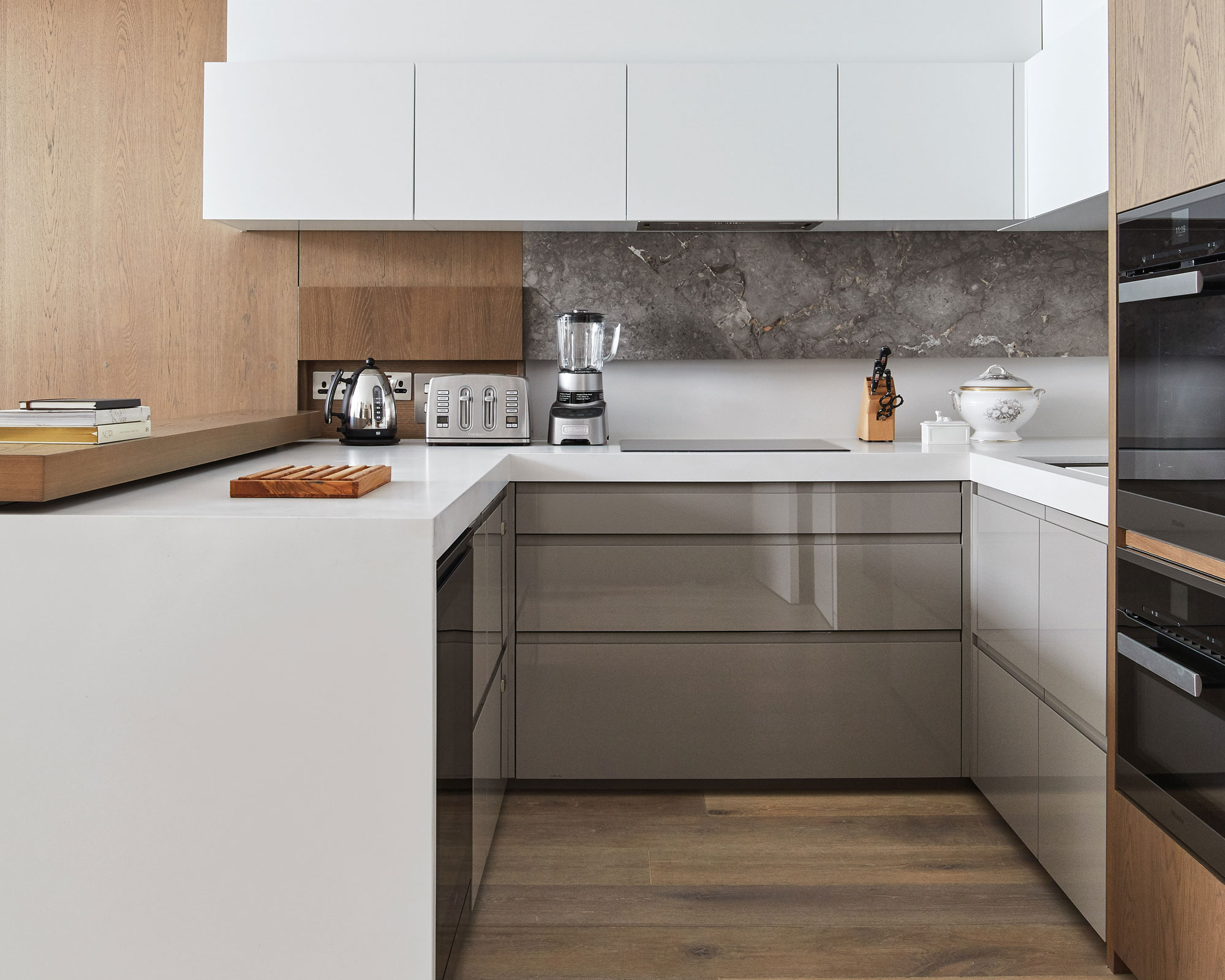
Less is more is often the best way with home design, particularly in an area like the kitchen, which is easily taken from calm to bustling in a matter of moments.
'It can be tempting to leave a lot of items or appliances on the countertop, but I’d suggest keeping countertops clear and having only essential appliances on them,' says Rudolph Diesel. 'Embracing this minimalist design can avoid the build-up of miscellaneous items while maintaining a clean, modern look.'
Numbers matter here, but even choosing a less-is-more color scheme might create more harmony in this space. 'While practicality is paramount, aesthetics play an equally important role in appliance placement,' says Li. 'A well-designed kitchen should exude a sense of harmony and balance, and appliances should complement rather than clash with the overall décor.'
FAQs
How can I create more countertop space?
When all of your appliances are beautiful, which is not uncommon nowadays thanks to careful design in everything from French presses to air fryers, it can be difficult to choose which will take pride of place on countertops, and which must reside in closed kitchen cabinets.
'For less frequently used appliances, like blenders or food processors, consider designated storage areas. Upper cabinets, pantries, or even rolling carts can provide ample space without cluttering the countertops,' recommends Li.
If you are particularly fond of baking essentials, and call on multiple small appliances to whip up your signature dishes – not just on Thanksgiving – calculate how much countertop space everything will realistically take up. 'Prioritize accessibility, ensuring that the appliance can be easily retrieved and put away without disrupting the kitchen's overall aesthetic.'
Looking to empty wall space often provides solutions to tiny kitchens and even small pantries: 'If countertop space is limited, consider wall-mounted solutions. Floating shelves or magnetic strips can accommodate smaller appliances, freeing up valuable countertop real estate.
This not only enhances the kitchen's aesthetic but also promotes a sense of spaciousness.' You can easily find magnetic strips on Amazon for kitchen knives and the like.
Bodum Chambord French Press | Was $55, now $27.99 at Amazon
This is one of our favorite French press coffee makers. It's the most beautiful one in our roundup and it makes delicious coffee too. At nearly half price, it's a Black Friday bargain.
What other appliances can you keep out of the kitchen?
Though small cordless appliances can often be safely used in different areas of the home, you should always check user manuals for specific safety recommendations in relation to the product itself. Even if small, never assume when electrical items are involved.
The microwave might be another appliance that you relocate to another area, especially in an apartment with a freestanding kitchen, for example. Miloshev says: 'It’s recommended to place the microwave on a flat, stable surface and avoid overcrowding the area around it to allow proper ventilation. Besides that, make sure to regularly clean the interior and exterior to prevent food residue build-up and maintain the appliance’s optimal performance.'
Where should you safely store large appliances?
Appliance technician David Miloshev shares further guidelines for placing larger appliances that you will typically find in the kitchen or utility.
'The refrigerator should be placed in a cool, dry area away from any direct sunlight and heat sources, such as stoves or ovens. In addition, leave sufficient space around it for proper ventilation, especially at the back because adequate airflow will help its compressor work more efficiently. Make sure also that it’s leveled so the doors can seal properly, which can affect its energy efficiency.'
Washing machines will also need to be on level ground and in a room with good ventilation, low humidity, and that is not prone to extreme temperatures. 'Similar to the refrigerator, make sure it’s leveled to prevent excessive vibrations during the spin cycle, which can damage the machine over time. Besides that, regularly check and replace the rubber hoses to prevent water leaks,' adds Miloshev.
'If you have a built-in oven or range, provide proper ventilation and always use the range hood or exhaust fan while cooking to remove excess heat and bad odors. Additionally, clean any spills and grease regularly to prevent the accumulation of build-up, which can affect the appliance's performance and safety.'
When it comes to the dishwasher Miloshev notes how water access and space are key: 'Install your dishwasher near the sink for easier access to plumbing and make sure there's enough space for the door to open fully. In addition, clean the filter and spray arms regularly to prevent clogs and maintain efficient cleaning.
'Make sure your dryer vent is clean and free from obstructions to prevent any fire hazards and regularly clean the lint trap after every use to maintain optimal airflow and energy efficiency.'
Display appliances with intention when finding the best position for them in the kitchen and beyond. Understanding the core function of items to know how you will use them, and how they might add to your home's aesthetic will help create more harmony in your home.
Sign up to the Homes & Gardens newsletter
Design expertise in your inbox – from inspiring decorating ideas and beautiful celebrity homes to practical gardening advice and shopping round-ups.

Camille is the former deputy editor of Real Homes where she covered a broad range of topics, including house tours, small space design, and gardens. She studied English language and Italian at the University of Manchester and during a year abroad studying linguistics and history of art in Bologna, Italy she started documenting her adventures and observations in a blog. Camille is always creating and spends her downtime painting, taking photos, traveling, and writing short stories.
-
 These are the 6 must-have colors to decorate with in April 2025
These are the 6 must-have colors to decorate with in April 2025What do retro-inspired yellows and beautiful blues all have in common? They're on our hot list for the season ahead
By Sophia Pouget de St Victor Published
-
 Plants never to grow next to fruit trees
Plants never to grow next to fruit treesExpert advice on which plants to keep away from fruit trees to encourage a healthy harvest
By Jacky Parker Published
